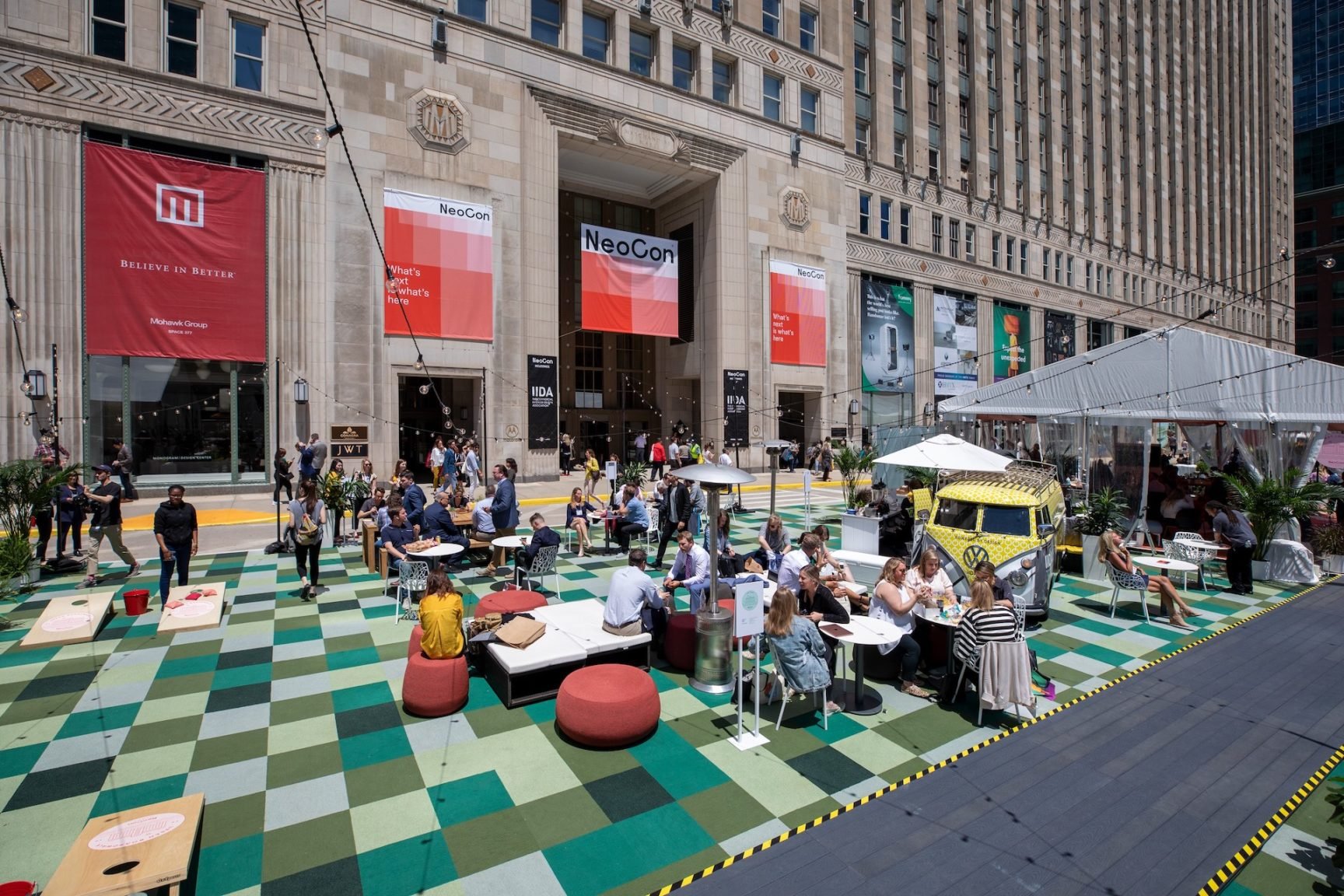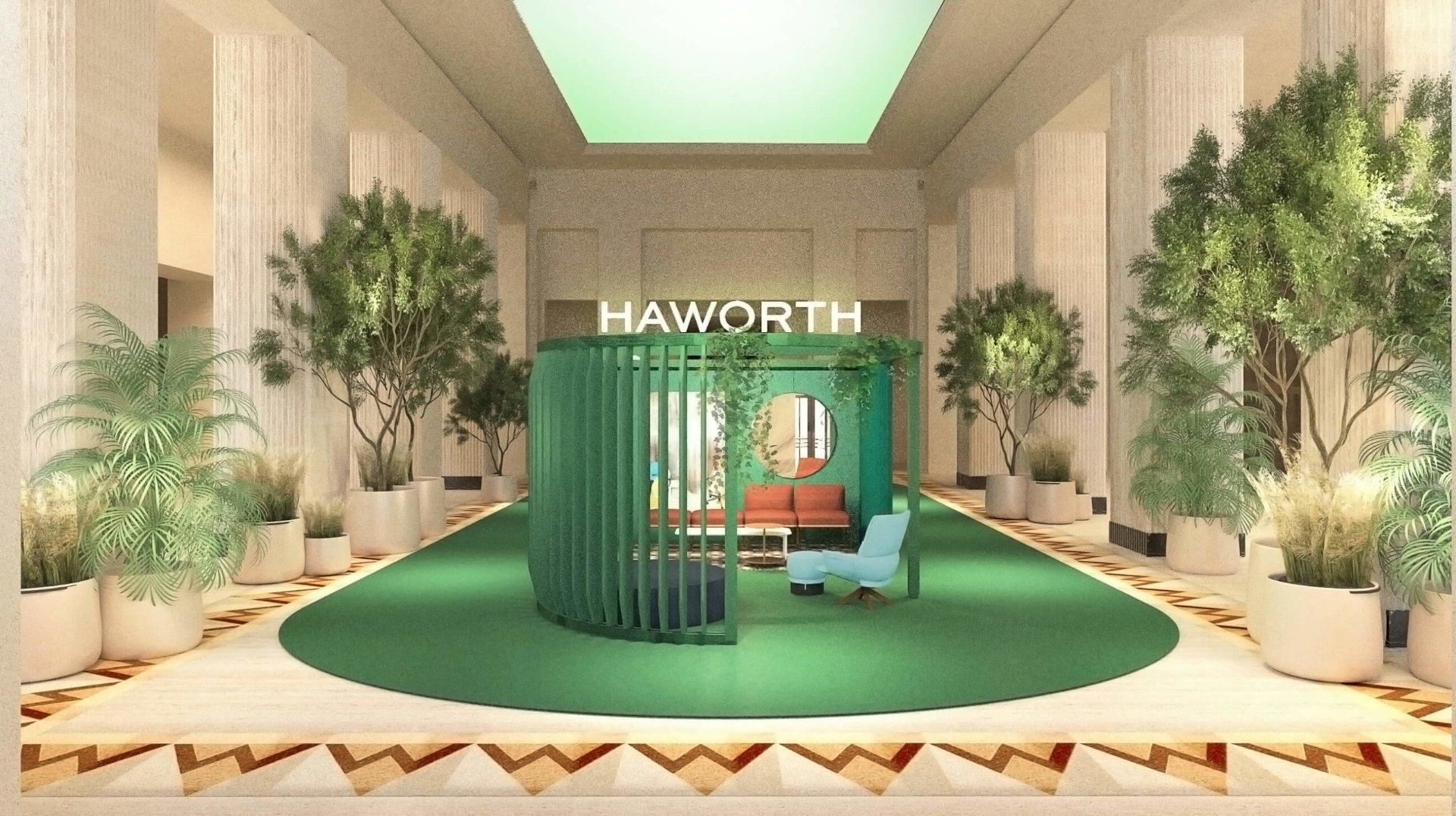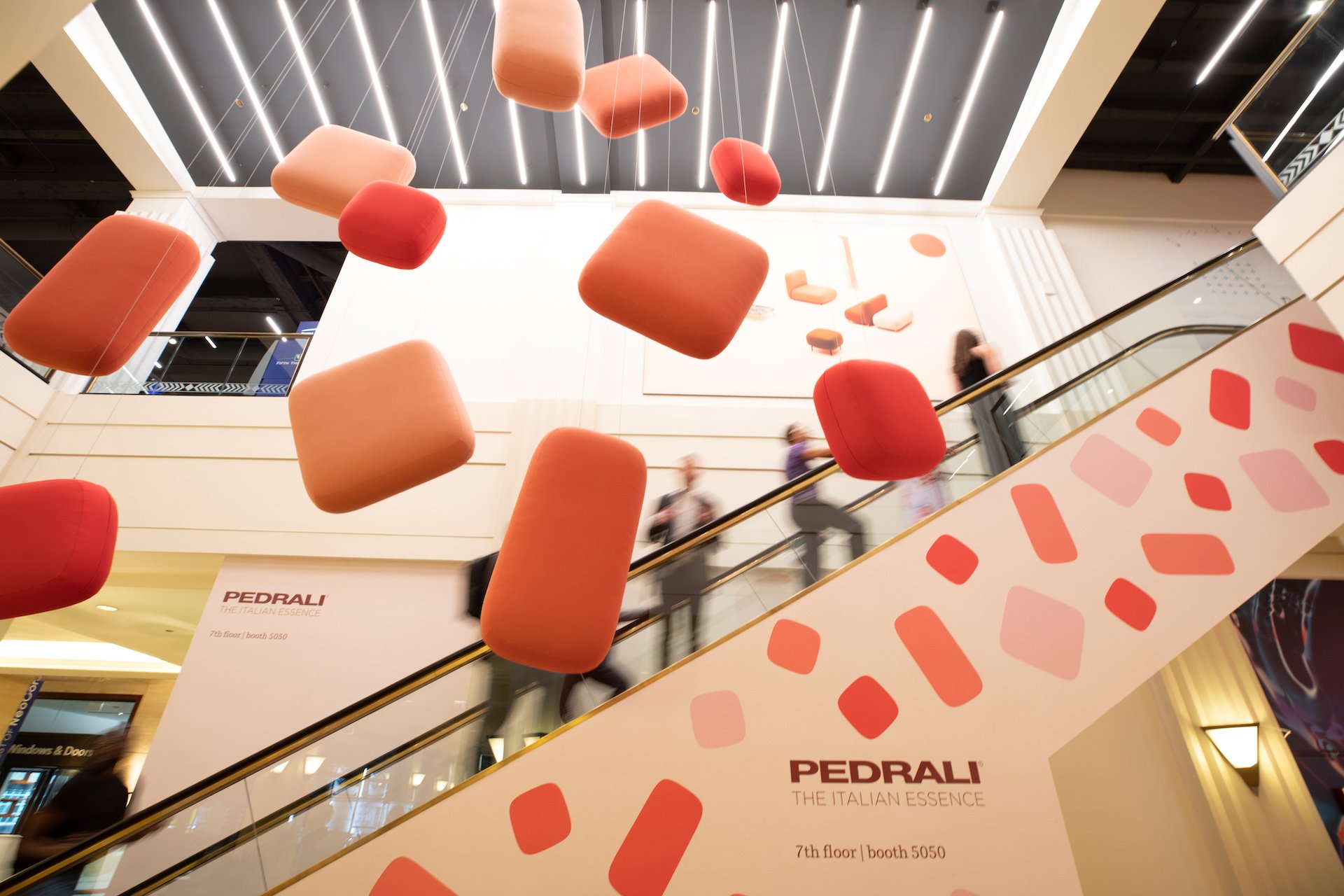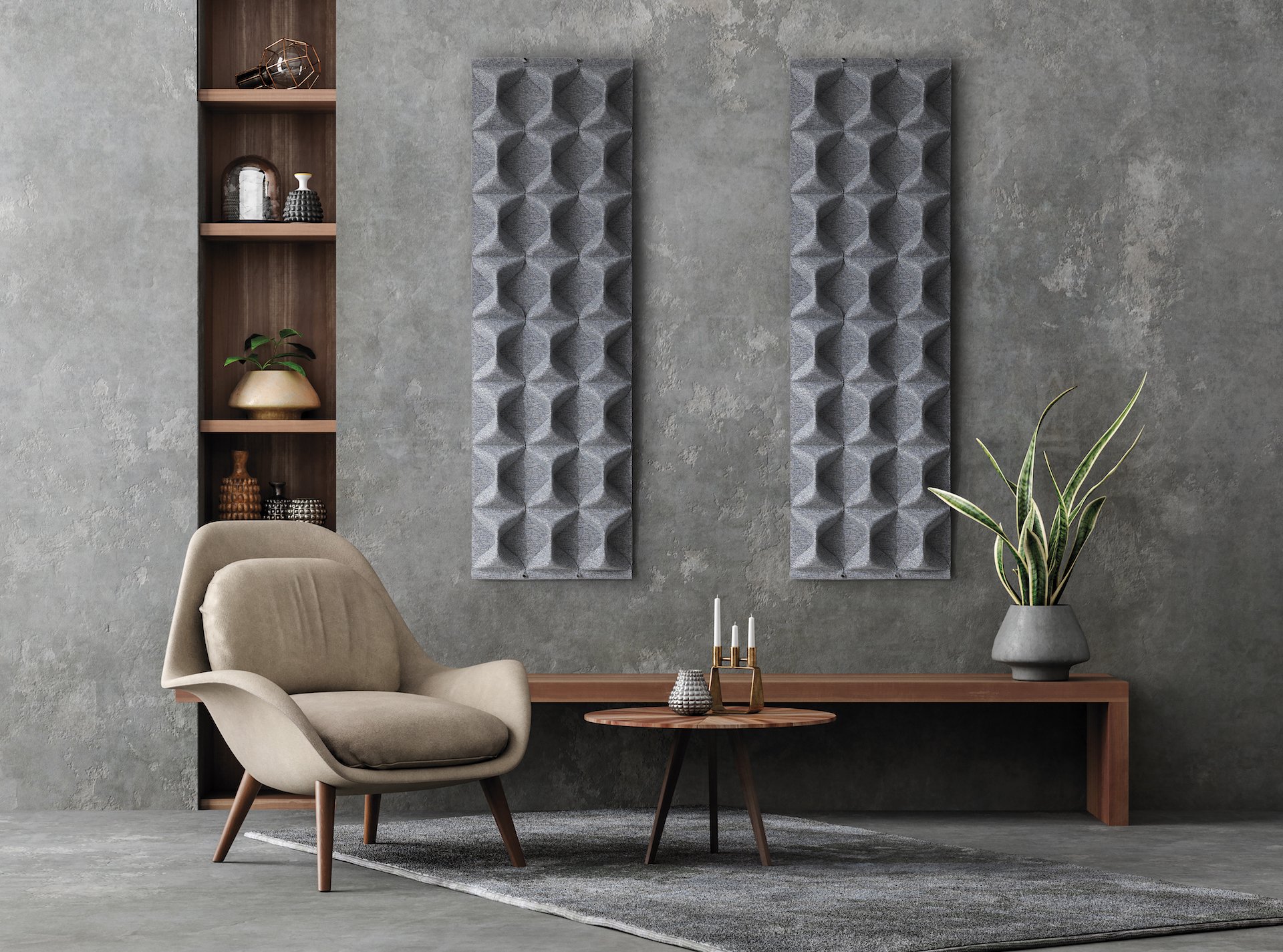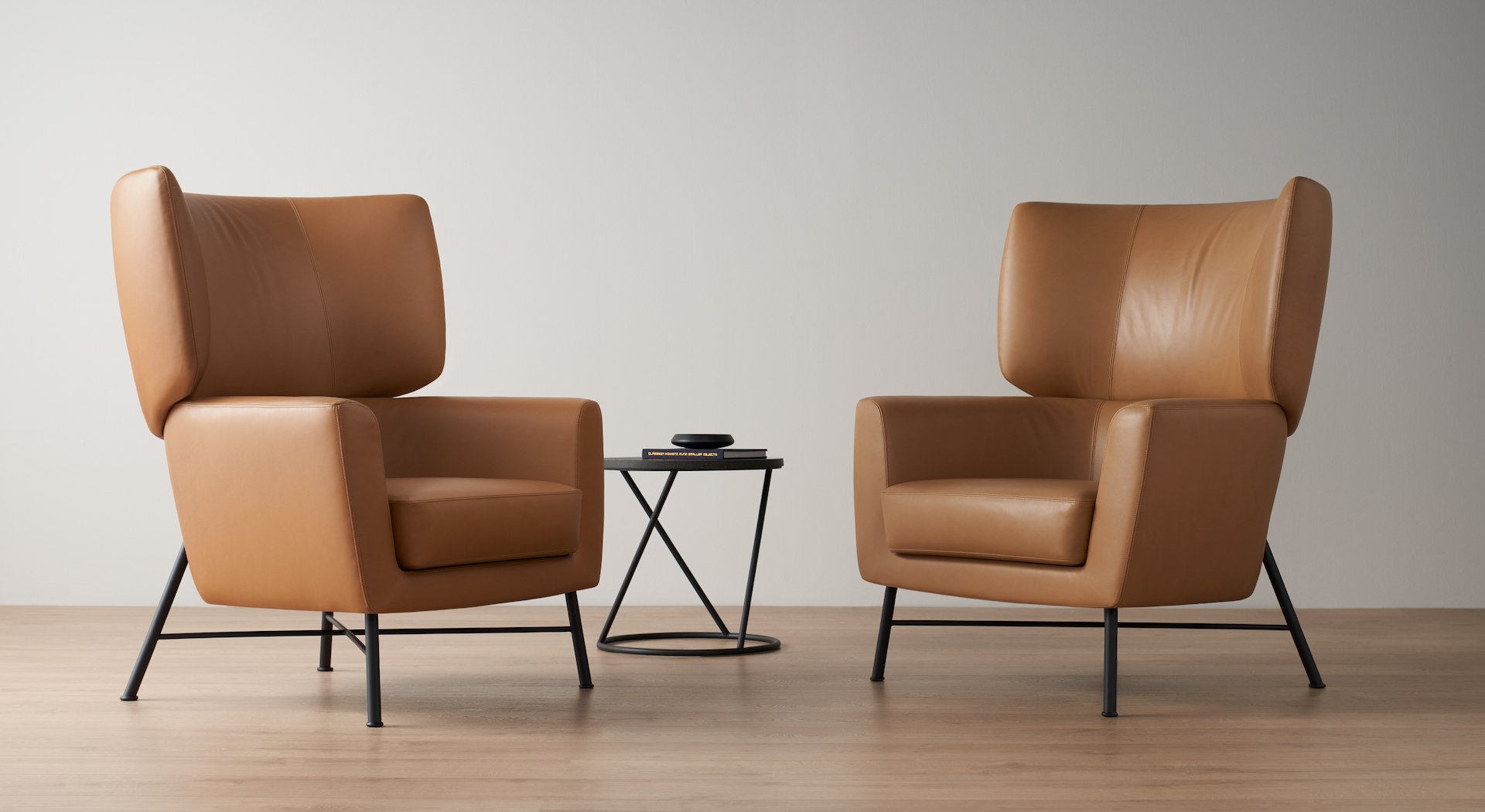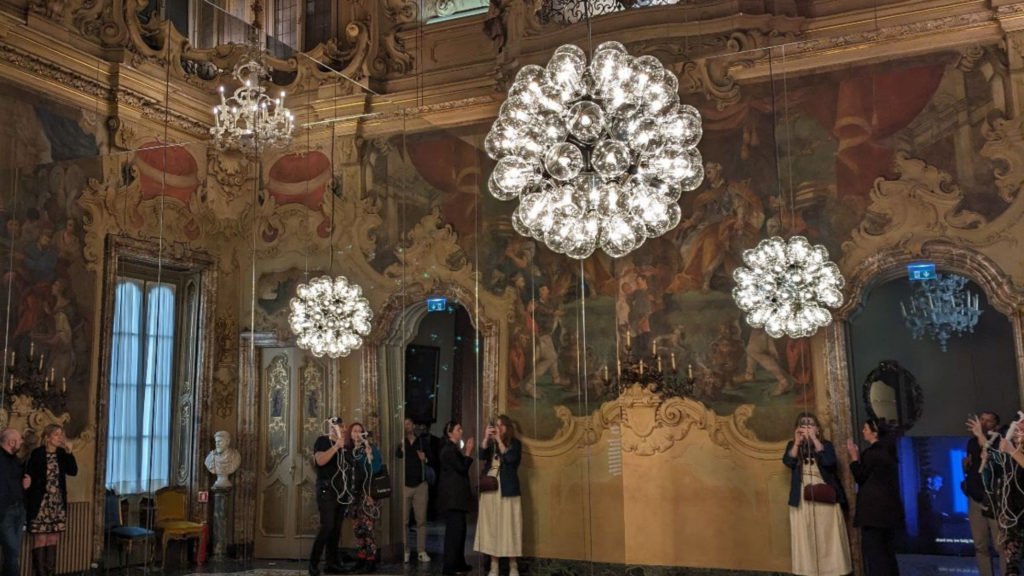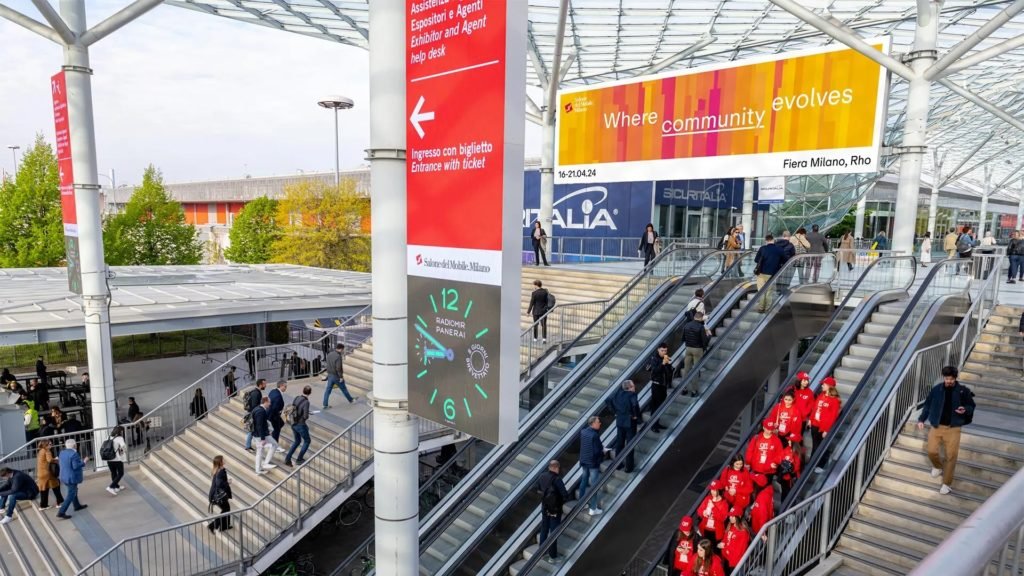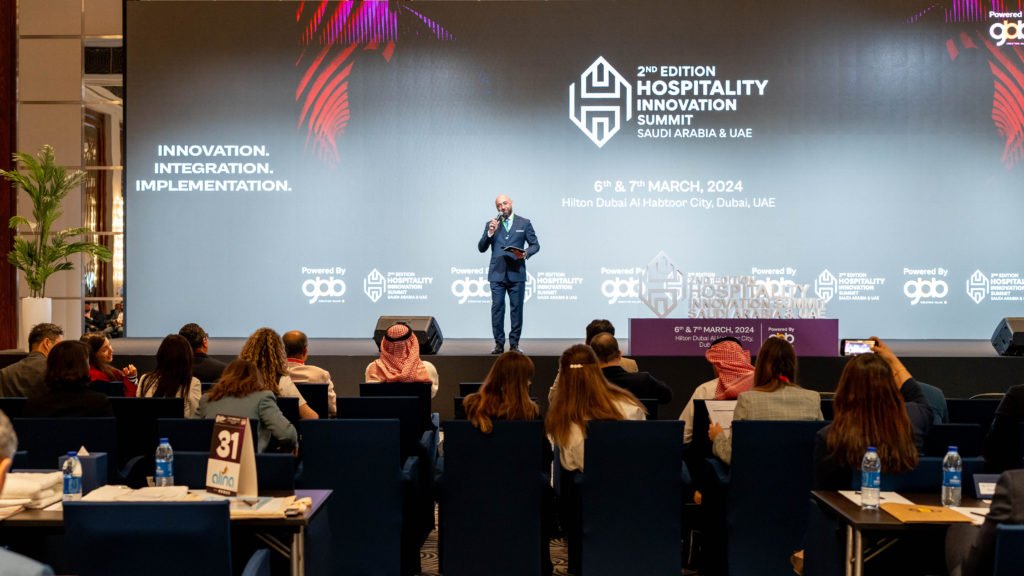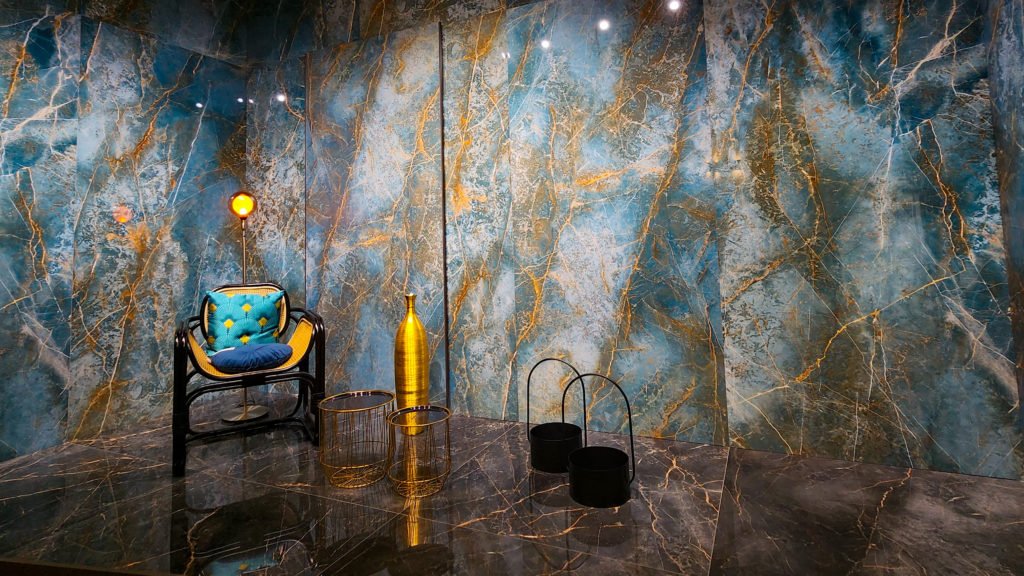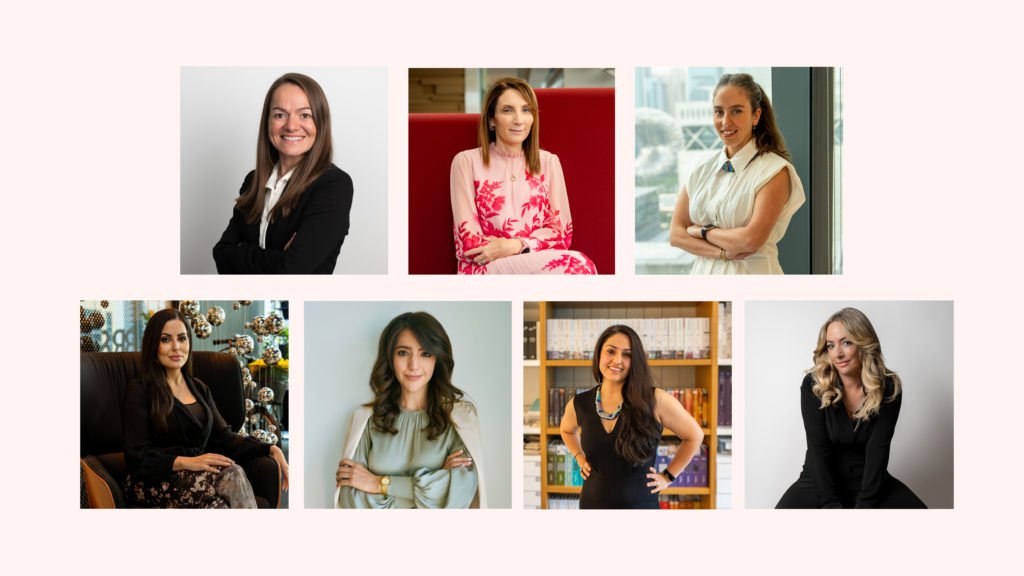Attendance this year
The number of visitors at 20,000 was around half of what it was in 2019, with a drop in temporary exhibitors from around 300 to 150. This was about par for all of the shows that recently returned to market, including Supersalone in Milan, and Maison & Objet in Paris.
A few showrooms remained dark, furnished simply with signs announcing their return in June 2022. Still, there was positive news. Eight manufacturers established new permanent spaces this year in time for NeoCon 2021. A total of 16 new showrooms opened since 2019, including ERG International, Extremis, Digilock, Spacestor, Kettal, HMTX Industries, Snowsound USA, Narbutas USA, Inc., Bernhardt Design, Ethnicraft, KFI Studios, Pedrali, OM Seating, HOWE, Formaspace, and Claridge Products. Additionally, Watson Furniture and 9to5 Seating decided to use this opportunity to expand their existing space.
While it felt like déjà vu in some spaces, with not a stitch of change since 2019, others, like Hightower, felt an urge to remodel, even though it had already won awards for its previous presence.
Portland, Oregon based designer, Casey Keasler, summed up what many were thinking: “I think we could all use a little optimism right now.” She picked up on themes of warm welcome, lingering and the unexpected. Elements of maximalism played out in a layering of colour, texture and pattern. “We embraced the idea of faux flora with a vibrant tropical print, pairing it with textural dried florals.” Trompe l’oeil wallpaper was layered with rich velvets and wools in deep garnets, blush velvets and soft beiges, contrasted with brass, rich brown and textured cream.
“The inspiration focused on an expectation that workplaces, hotels, places of education, or any public space should give something back, leaving us feeling better at the end of the day than we did at the start,” says Hightower Co-founder & CEO, Natalie Hartkopf.
Private nooks were also featured, for moments of solitude, creating a cosy feeling of working from home, according to Jessica Ahlering, Hightower’s Director of Marketing & Products. “We’re taking back shared spaces where socialisation and collaboration are optimised, recognising where we’ve been, but igniting optimism and challenging people to look at new ways of coming together,” she says.
The space was so inviting, we saw one visitor camping out with his laptop, occasionally glancing up and breathing it all in – as was intended. Kudos.
Overall, it was very clear that the ‘resimmercial’ idea that started sprinkling the contract vocabulary a few years ago had really taken root. At Haworth, Milan-based designer Patricia Urquiola imported these homey sensibilities, down to the almost folksy, knit-and-crochet look, woven rugs that she designed for Gans. In fact, it was Urquiola’s innovation with Opennest that introduced the concept of stylishly dividing spaces with decorative fabric screens.
“It’s all about the layering of colour, texture and materials – even accessories,” says Julie Smith from Haworth. “An office that doesn’t look like an office.”
WHAT’S BUZZING
The Pergola. Taking an architectural concept familiar to the outdoors in landscaping, bringing it inside, and creating a flexible work environment beneath it that is more human-friendly. With WFH so prevalent during the pandemic, home offices are on many residential remodeling lists. Outdoor offices on decks and patios have entered the conversation, which is likely to extend to public spaces. “It’s work from anywhere,” says Smith. “Your home, office, coffee shops, hotel lobbies and outdoor spaces.” At Steelcase, similar enclosures were displayed, termed work tents. Both concepts have been dubbed the new cubicle, as these spaces are designed to fit within an open floor plan. The idea is a design for individual and collaborative work, plus products for a neurodiverse work force. A range of screen designs, some on casters, also enable the division of space where needed.
The tall backed, cocooning chairs that hug the body, which surfaced a few years back, continue to evolve. The focus is on comfort, acoustical and visual privacy. They’ve evolved into ‘stations’ or hubs that can be closed off with curtains or sliding doors. As the pergola borrows from the garden, some of these seem to borrow from the bathroom, specifically, a framed shower. And the more heavily framed models even channel the Tardis from Dr. Who. But don’t expect them to teleport you anywhere, except in your own mind!
Evolved cubicles – At Haworth, a new product called the Echo work system features a desk with lots of movement. “We’re not asking people to be in one static spot any more,” says Smith.
Acoustical – This was a growing category before the pandemic, and it continues to thrive. Because unless you have noise cancelling earphones, you need to tune out any distractions. Panels, decorative wall installations, screens and lighting all crafted from wool and felt, even PET panels, as those multi-height, repositionable screens at Ghent, offered great acoustical solutions.
Performance fabrics with bleach cleanability continued to ratchet up in demand. Designtex, Mayer, Pallas, and off campus at Knoll, offered what looked like jacquard prints, but were really silicone and felt more like leather than vinyl.
WHAT’S TRENDING
Mixed materials
Wood married to metal or concrete, metal to porcelain or stone – these were some of the most stylish combinations echoed in high-end residential design from Italy and France.
At Tuohy, the Faraway wood conference table featured a 6 mm Cambria inset that was LED lit from beneath for dramatic effect. The same table had a completely different look, shown in standing height pairing a powder coated aluminum frame in Yves Klein blue (a major fashion hue in Paris) with a matching top from Fenix, an Italian company just acquired by Wilsonart.
Colored frames and hardware
This is a trend that absolutely crossed the pond, and many of the European brands like Andreu World are leading the charge. Powder-coated aluminum or steel chair frames in a rainbow of colours were upholstered tone on tone, or with contrasting fabric for pop. Table frames also typically contrasted with say with a natural wood or a porcelain slab.
Another use of colour was in case goods, as an accent in the frame or legs as well as the hardware. It’s a brilliant way to introduce a more lively hue without a huge commitment, and we actually saw this in bathroom vanity design at Cersaie, the international tile show in Bologna late last month.
It goes without saying that colour, which made great inroads in the contract world in 2019, is almost therapeutic this year. Many designers spoke of depression during the pandemic and the need to lift spirits with exuberant hues as well as patterns. Colour played the happy communicator.
The Palette
Greens and blues did not lose their edge. And orange was taken more seriously than a summer fling, when paired with a sophisticated hue. Yellow also was a vibrant option. Lavender made a consistent appearance, as it did in Paris, which shouldn’t be too much of a surprise as there have been more than a few nuanced grey-lavenders before.
Automatic chairs shown in a pale lavender at the Bernhardt showroom window were especially eye-catching, with leather pull straps on the back. The chair, designed by Cary Grosser, was actually inspired by Linus, the philosophical character in the ‘Peanuts’ cartoon. He conceived of it as a go-anywhere, anytime chair, much like Linus’ blanket. The lightweight chair features self-locking castors. Jerry Hellig, President of Bernhardt Designs, feels that this lounge chair is fun and perfect for the present time. The molded foam double shell allows unique fabric and leather combinations and contrasts. “Automatic should resonate with the masses as everyone is trying to find a balance between the personal and the public in our lives,” he says. “The chair provides a personal choice.”
Let’s talk about colour schemes. Mirroring European trends, there was one particular grouping that really seemed on point, ranging from blush to soft terracotta, rosey red, cinnamon and berry.
Pattern and textiles
There’s always some kind of pattern available in contract upholstery, from florals to mid-century and retro-inspired geometrics to stripes and plaids. What stood out this time was texture and complex weaves with multiple coloured threads almost as fine as embroidery. But what was most striking about the latest editions is their sophistication (largely due to technique and the state of digital printing), inspirational back stories and texture.
At C.F. Stinson, designers set out to create happy patterns. “We wanted everything to be kind of bold,” says a Stinson spokesperson about the Menagerie pattern. “We thought, wouldn’t it be fun if we took a traditional damask design, where it’s very mirrored and symmetrical, and blew it up, added some really fun animals and exploded the colour. We call it a riot of colour!”
The result had an almost modern, folk art vibe, and the bordered figures appeared to be appliqued. Another pattern, Ishi, was taken from the Japanese word for stone. “We wanted to make it really grandiose.” The irregular ovals were filled with tiny rice kernels. A stunning matelassé weave in apricot with a pattern of slim stylized dancers called Elena was one of three patterns debuting at Wolf-Gordon. They’re part of a new collection called Muse, a celebration of women. The collaboration was between the principals of V Starr, a South Florida design firm founded by tennis champion Venus Williams, Sonya Haffey, Wolf-Gordon CCO, Marybeth Shaw, and senior designer Kathrin Haage. And when you see pattern where you least expect it, it’s almost startling. That was the case at LazyBoy/Knu, where a bold retro print covered seating designed for the healthcare industry.
Seating
Modular proved to be the most versatile element for seating. Serpentine styles offered drama. Built-in benches and tables added functionality. Comfort was especially key.
Nesting cocktail tables
Totally borrowed from residential design and again, instigated in Europe, this look really suited contract design. Wood, stone, porcelain and metals come together with overlapping shapes and sizes as well as portability to demonstrate a welcome versatility.
Surface treatment
Texture and dimension distinguished casegoods in novel ways. At Allsteel, there was a cabinet clad in a textured grey fabric with an aqua solid surface top. It recalled similar treatments in residential with fabric or wallpapers, like grasscloth as panel insets. Tambours gave elegance to wood facades, in the Vox® credenza LCS at Nienkämper. Decca’s Cloak credenza showed off a subtle tonal geometric pattern.
Biophilia
More and more, we were seeing green. Literally. In 2019 at the last Eurocucina during Salone del Mobile, this budding trend got a lot of traction in kitchen design. Integrated into open shelving, sometimes in lighted shelves above islands, were spots for a bevy of potted herbs and plants.
Once again, there were full green living walls, displays of moss (in a rainbow of hues with reindeer moss batch-dyed with water based colours at Scandinavian Spaces) and lots of foliage and potted trees. At NeoCon, we saw a lot of products designed to house those plants, including long footed stands that may serve as dividers in restaurants. One clever design at Allsteel featured integrated round tabletops for setting beverages or laptops for work.
In addition, biophilic designs featured organic patterns taken from nature, especially prevalent in floor and wallcovering.
Sustainability
New Philippe Starck chairs at Andreu World were part of their 100 percent pure wood project, created in part or entirely with selected, slow-growing wood from reforested areas that are harvested from the company’s own land. In many cases, the pieces were made without using any component of any other material.
Also at Andreu World was Patricia Urquoila’s Nuez Lounge Bio® chair, which featured a new bioplastic that is 100 percent sustainable. The wraparound chair has a high backrest that displays the technological complexity of the shell. The chair is upholstered with a new fabric made from PET bottle plastics and textile waste.
Plastic waste also made a splash on a tabletop from Scandinavian Spaces, made from 100 percent recycled plastic in an explosion of the original colours.
Storage
A tall European oak cabinet from Ethnicraft recalled school locker storage, but its aesthetic takes a major turn. Designed by Alain van Havre, the angular composition is stepped, lending movement to the face — even more impressive when several pieces are ganged together. It was inspired by the European brutalist movement.
Something else to get excited about was the more offbeat storage solutions, like rolling carts and colourful, small supply boxes on castors.
Health and wellness
Not what you think… and not necessarily confined to healthcare. Tarkett partnered with HOK to address neurodiversity with an online tool that helps clients and designers understand the spectrum of sensitivity (hypo to hypersensitive). It guides you through materials and layout decisions, aimed at providing a greater variety of spaces. The idea is to enable employees to find a workspace that suits them and their workstyle preferences.
Signs of the times
Two products – one, a column designed to hold sanitiser. And two, a warm ring light whose adjustable LED-lit circle actually gives a boost to your face by adjusting colour temps so that you look good on that zoom call. With or without makeup, you choose (seen and demo-ed at Steelcase).

